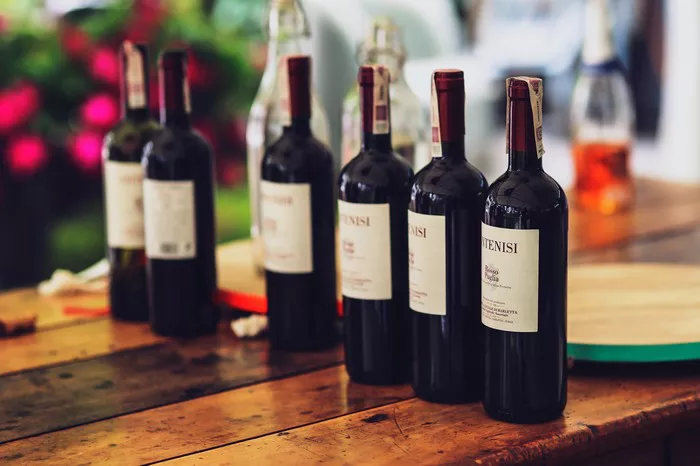Merlot, a beloved red wine varietal, offers a spectrum of flavors and complexities that can captivate both novice and seasoned wine enthusiasts. However, navigating the vast array of Merlot options available can be overwhelming. Understanding what distinguishes a good Merlot from an average one is key to making an informed choice. This guide aims to demystify the process, providing insights into the characteristics, regions, vintages, and factors that contribute to selecting an exceptional bottle of Merlot.
Understanding Merlot: Characteristics and Flavor Profile
Before delving into how to select a good Merlot, it’s essential to grasp its defining characteristics. Merlot grapes typically yield wines that are medium to full-bodied with a smooth texture and a rich, fruit-forward profile. A well-crafted Merlot often exhibits flavors of plum, cherry, raspberry, and sometimes blackberry, accompanied by notes of herbs, spices, and, occasionally, a hint of chocolate. Its moderate tannins and balanced acidity contribute to its approachability and versatility.
When seeking a good Merlot, consider the wine’s balance. A quality Merlot strikes harmony between its fruitiness, acidity, and tannins, none of which should overpower the others. This equilibrium creates a pleasant drinking experience, making it a delightful choice for various occasions and food pairings.
Exploring Merlot-Producing Regions
Merlot is cultivated in numerous wine regions worldwide, each imparting distinct characteristics to the wine. Some renowned regions for Merlot production include Bordeaux in France, where Merlot is a key component in the region’s iconic blends. In Bordeaux, Merlot-based wines from Pomerol and Saint-Émilion stand out for their elegance and complexity.
Additionally, regions like Napa Valley in California, Tuscany in Italy (particularly in the Bolgheri area), and parts of Chile and Australia have gained recognition for their exceptional Merlot offerings. Climate, soil composition, and winemaking techniques in these diverse regions contribute to the unique expressions of Merlot, offering a wide spectrum of flavors and styles.
When learning how to pick a good Merlot, explore wines from various regions to experience the nuances influenced by terroir, climate, and winemaking traditions.
Assessing Quality: Vintage Variation and Aging Potential
Vintage plays a significant role in determining a Merlot’s quality. While Merlot is generally known for its approachability and early drinkability, certain vintages stand out for their exceptional quality and aging potential. In some cases, Merlot wines benefit from bottle aging, evolving and gaining complexity over time.
Vintage variation is crucial when selecting a good Merlot. In cooler years, Merlot wines might exhibit higher acidity and firmer tannins, while warmer years could result in riper fruit flavors and softer tannins. Exploring vintage charts or seeking advice from sommeliers and trusted wine merchants can assist in identifying exceptional vintages known for producing outstanding Merlot wines.
Consideration of a Merlot’s aging potential is vital. While many Merlots are crafted for immediate consumption, some higher-quality bottles can age gracefully for several years, developing more intricate flavors and a smoother texture. Understanding a wine’s aging potential aids in deciding whether to enjoy it promptly or cellar it for future appreciation.
Examining Labels and Wine Descriptions
Reading and interpreting wine labels and descriptions can provide valuable insights into the characteristics of a Merlot. Labels often indicate the region, vintage, alcohol content, and sometimes specific vineyard sources or winemaking techniques. Understanding these details can guide your selection process.
Furthermore, wine descriptions offered by producers, sommeliers, or critics can provide clues about a Merlot’s flavor profile, complexity, and style. Look for descriptors that align with your preferences, such as “velvety texture,” “ripe red fruits,” or “subtle oak influence.” Such descriptions can help narrow down choices and identify Merlots that match your taste preferences.
Seeking Recommendations and Tasting Opportunities
One of the most enjoyable ways to explore and discover a good Merlot is through tastings and seeking recommendations. Visiting wineries, attending wine tastings, or joining tasting clubs can expose you to a variety of Merlots, allowing you to compare and contrast different styles and producers.
Engaging with knowledgeable sommeliers or wine professionals can also offer valuable recommendations based on your preferences. Whether it’s a Merlot that complements a specific dish or a bottle renowned for its exceptional quality, seeking guidance can enhance your understanding and appreciation of Merlot wines.
Consider Price Points and Value
While price doesn’t always correlate directly with quality, it can serve as a general indicator. Good Merlots can be found across a range of price points, from affordable everyday options to premium, higher-priced bottles. Understanding your budget and exploring wines within various price ranges can help you discover excellent value and quality at any level.
It’s important not to solely rely on price when selecting a Merlot. Some lesser-known producers or regions offer exceptional quality at a more accessible price compared to their well-established counterparts. Exploring diverse options within your budget can lead to surprising discoveries of high-quality Merlot wines.
Storage and Serving Recommendations
Once you’ve selected a good Merlot, proper storage and serving temperatures are crucial for an optimal tasting experience. Store your wine in a cool, dark place away from temperature fluctuations and direct sunlight. Maintaining a consistent temperature, ideally between 55-60°F (13-15°C), helps preserve the wine’s flavors and aromas.
When serving Merlot, consider decanting it to enhance its flavors and aromas, especially for older or more robust bottles. The ideal serving temperature for Merlot is typically around 60-65°F (15-18°C), slightly cooler than room temperature. This allows the wine to showcase its complexity while remaining approachable.
Conclusion
Mastering the art of picking a good Merlot involves understanding its characteristics, exploring diverse regions and vintages, reading labels and descriptions, seeking recommendations, considering value, and ensuring proper storage and serving. By incorporating these elements into your selection process, you can confidently explore the world of Merlot and discover bottles that align with your taste preferences, whether for casual enjoyment or special occasions. Embrace the journey of exploration and savor the diverse expressions this beloved red wine varietal has to offer.


